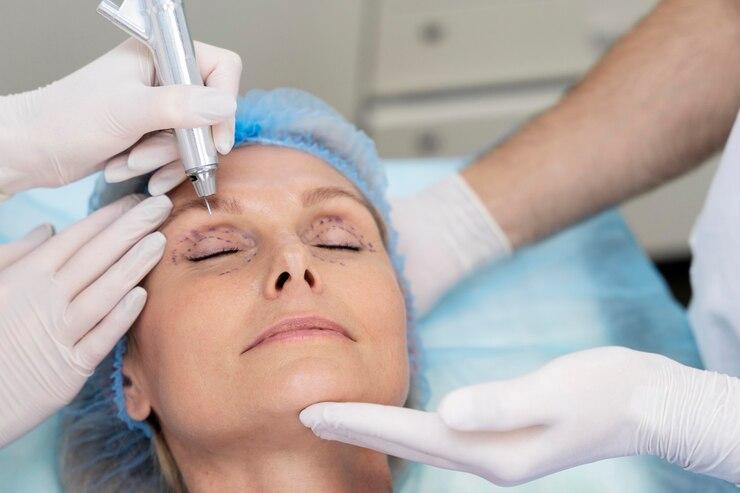If you're considering lower blepharoplasty (a surgical procedure aimed at rejuvenating the lower eyelids by removing excess fat or skin), choosing the right surgeon is crucial for achieving the best results and ensuring your safety. This procedure requires not only technical expertise but also an understanding of aesthetic balance. Here's a guide to help you make an informed decision when selecting a qualified surgeon for your lower blepharoplasty.
1. Board Certification and Credentials
The first and most important step in finding a qualified surgeon is to check for board certification. Look for a surgeon who is certified by the American Board of Plastic Surgery (ABPS) or a similar reputable governing body in your country. Certification ensures that the surgeon has completed the necessary education and training, as well as passed rigorous exams.
Additionally, you should verify that the surgeon has specific training and experience in eyelid surgery, as lower blepharoplasty requires specialized skills that differ from other types of plastic surgery.
2. Experience with Lower Blepharoplasty
Not all plastic surgeons specialize in eyelid surgery. When researching potential surgeons, it’s essential to find someone who has a proven track record of performing lower blepharoplasty. Experienced surgeons will be well-versed in the techniques that deliver natural-looking results while minimizing risks like scarring or complications.
Ask the surgeon how many lower blepharoplasty procedures they’ve performed, and inquire about their success rate and any challenges they've encountered. Surgeons who specialize in facial procedures, especially eyelid surgeries, are more likely to understand the intricacies of the delicate eye area.
3. Review Before-and-After Photos
One of the most reliable ways to gauge a surgeon’s expertise is by reviewing their portfolio of before-and-after photos from previous patients. These photos can give you a visual sense of the surgeon's skill in achieving natural, aesthetically pleasing results.
Make sure the images reflect actual results, not stock photos or those from other sources. Pay close attention to patients with similar concerns to yours, such as under-eye bags, excess skin, or hollowing beneath the eyes. This will help you understand how the surgeon approaches your specific issue.
4. Consultation and Communication
Your consultation is a vital part of the process when choosing a surgeon. During the consultation, observe how comfortable you feel talking to the surgeon. A skilled surgeon should take the time to listen to your concerns, explain the procedure thoroughly, and discuss any potential risks or complications.
Ask about the surgeon’s approach to lower blepharoplasty. Some surgeons use a transconjunctival technique (making an incision inside the lower eyelid) to minimize visible scarring, while others might use an external approach. Make sure the surgeon's technique aligns with your goals and expectations.
Good communication during the consultation is a sign that the surgeon values patient care and understands the importance of personalized treatment.
5. Patient Reviews and Testimonials
Checking online reviews and testimonials can give you insights into the surgeon's reputation and patient satisfaction. While individual experiences may vary, a pattern of positive reviews and testimonials is a strong indication that the surgeon is trustworthy and skilled.
Look for feedback on the surgeon’s professionalism, bedside manner, results, and overall experience. If possible, ask the surgeon for references of previous patients who had lower blepharoplasty so you can hear firsthand accounts of their experience.
6. Hospital or Surgery Center Accreditation
The surgical facility where your procedure will take place is equally important as the surgeon. Ensure that the hospital or surgery center is accredited by a recognized medical body, such as the Joint Commission or the American Association for Accreditation of Ambulatory Surgery Facilities (AAASF). Accreditation ensures the facility meets stringent standards for patient care, safety, and hygiene.
Additionally, inquire whether the surgeon has admitting privileges at a local hospital in case of an emergency. This demonstrates that the surgeon is highly regarded in the medical community and is trusted to perform surgeries in an accredited environment.
7. Trust Your Instincts
Finally, trust your instincts when selecting a surgeon. You should feel confident in their abilities and trust that they have your best interests at heart. If something feels off during the consultation or if the surgeon rushes through your questions, this could be a red flag.
It’s essential that you feel comfortable and supported throughout the process. Choosing a surgeon for lower blepharoplasty is a personal decision that should be made carefully, and your comfort level with the surgeon will contribute to your overall satisfaction with the results.
Conclusion
Choosing a qualified surgeon for lower blepharoplasty is crucial to achieving a successful outcome and minimizing potential complications. By ensuring that the surgeon is board-certified, experienced in eyelid surgery, has a portfolio of successful cases, communicates effectively, and operates in an accredited facility, you can make an informed decision that puts you on the path to looking and feeling your best. Take your time, do your research, and trust the process—your eyes deserve the best care possible. learn more here - https://www.puritybridge.co.uk/procedure/clinic-based-aesthetic-surgery/lower-eyelid-blepharoplasty/



